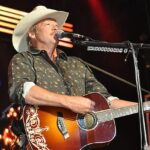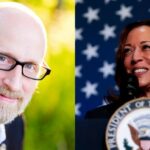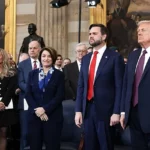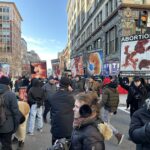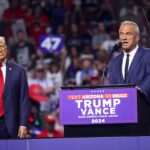American Politics, Historical Essays
Facing Death with Heroism: Trump Joins Jackson, Roosevelt, and Reagan
At 6:11 p.m. on July 13th, just as former President Donald J. Trump turned from the crowd gathered in Butler, Pennsylvania, to highlight an immigration chart, a bullet fired by 20-year-old Thomas Matthew Crooks tore past his head, grazing his ear. The would-be assassin was firing from a rooftop 130 yards away; Trump raised his hand to his bloodied ear; the rally erupted. Trump ducked behind the podium as Secret Service agents swarmed him, gunshots ringing out—some from the counter-sniper on the rooftop near the stage. Crooks was killed. For a moment, there was only confusion and screams.
The agents stood, hunching, to move Trump to the vehicle. In the video, he can be heard telling them to stop for a moment, and he leaned out of the protective ring. The shooter was dead, but Trump didn’t know that. Exposing himself, he leaned towards the crowd, his face bloody, and pumped his fist: “Fight!” he yelled hoarsely. “Fight! Fight!” The crowd went wild, and a chant rose up: “USA! USA! USA!” Evan Vucci of the Associated Press, who had rushed the stage while the gunshots were still ringing out, snapped a photo of Trump, backed by an American flag, raising his fist as four half-crouched agents encircled him.
It was the birth of an American icon.
Conservatives have often complained that Donald Trump has no sense of history; that he so often fails to meet the moment due to his pettiness and attack dog instincts. But mere seconds after an assassination attempt, with the Secret Service trying to hustle him from the scene and at least one man dying in the bleachers behind him, Trump seized the moment. He fell behind the podium an almost-martyr; he rose with a defiant disregard for personal safety and a war cry that made him a symbol. Americans have always worshipped physical courage, and Trump embodied it on Saturday. Those photographs have already entered the annals of American iconography.
When Trump rose on the Pennsylvania stage to rally his crowd, he joined the storied history of American assassination attempts. The events on Saturday are incredibly jarring; the last significant assassination attempt in the United States occurred 43 years ago—before I was born—when John Hinckley Jr. shot Ronald Reagan. But it is perhaps more unusual that political violence has been such an aberration for so long. From 1963 to 1981, high-profile murders were sickeningly common. President John F. Kennedy was shot in Dallas in 1963; his brother Robert F. Kennedy, the father of third-party presidential candidate RFK Jr., was murdered five years later at the Ambassador Hotel in Los Angeles.
Martin Luther King Jr. had been shot only two months earlier, and he wasn’t the only civil rights leader to be assassinated. Medger Evers was gunned down on his front stoop in 1963; Malcolm X was shot while delivering a speech in New York City in front of his wife and daughters. Alabama Governor and segregationist presidential candidate George Wallace was shot twice in the stomach at point-blank range in 1972 after delivering a speech; he was paralyzed from the waist down for the rest of his life. In 1975, a member of the Manson family tried to kill President Gerald Ford at the California State Capitol, but the gun did not fire; 17 days later, another woman shot at Ford in San Francisco and missed.
But Trump’s defiance in the face of death echoes that of American giants like Andrew Jackson, Teddy Roosevelt, and Ronald Reagan.
On January 30, 1835, President Andrew Jackson was leaving a funeral at the U.S. Capitol. Richard Lawrence, a mentally disturbed painter who was sporadically convinced that he was Richard III of England, was waiting for him near a pillar in the East Portico with two pistols. As Jackson approached, he produced one and fired at the president’s back; it misfired. He pulled a second pistol and that, too, misfired—the enraged 67-year-old president charged Lawrence, cane held high. The would-be assassin ducked as his target began to deal him vicious blows; Lawrence was rescued by a crowd that included Congressman Davy Crockett, who would later die at the Alamo.
On October 14th, 1912, former president Theodore Roosevelt was campaigning for the presidency as a third-party candidate in Milwaukee, Wisconsin. (His predecessor, William McKinley, had been assassinated in 1901.) As he stood in an open-air crowd and waved, former saloonkeeper John Schrank shot him with a Colt revolver from five feet away. The crowd seized Schrank, screaming “Kill him!” Roosevelt shouted that they were not to hurt him; police removed the would-be killer, and Roosevelt coughed several times into his hand. Seeing no blood, he concluded that the bullet had not hit his lungs, and refused to go to the hospital because he was expected to give a speech.
His opening line in the Milwaukee Auditorium was a barn burner. “Friends, I shall ask you to be as quiet as possible,” he said. “I don’t know whether you fully understand that I have just been shot.” The audience gasped. Roosevelt unbuttoned his vest and exposed his bloodstained shirt; the folded 50-page speech in his coat pocket had a bullet hole through it. “It takes more than that to kill a bull moose,” the candidate told them, holding up his speech. “Fortunately, I had my manuscript, so you see I was going to make a long speech—and there is a bullet, there is where the bullet went through—and it probably saved me from it going into my heart. The bullet is in me now, so I cannot make a very long speech, but I will try my best.”
Roosevelt only agreed to go to the hospital when his speech was finished. X-rays found that the bullet was lodged against his fourth right rib. In a telegram to his wife, Roosevelt assured her that the wound was “trivial” and that he was in “excellent shape.”
On March 30, 1981, President Ronald Reagan was leaving the Washington Hilton after a speech when John Hinckley Jr. fired six shots in less than two seconds, hitting multiple members of Reagan’s entourage. One bullet struck Reagan, entering his chest under his left armpit and lodging an inch from his heart. The Secret Service rerouted the vehicle to George Washington University Hospital. Upon arrival, the wounded president refused to be helped or carried. Conscious that the people were watching, Reagan smiled at onlookers as he strode towards the doors, close to death. Only when he was inside did he buckle and fall to one knee.
When Nancy arrived, he joked: “Honey, I forgot to duck.” Just before he went into surgery, he removed his oxygen mask and joked to the medical team: “I hope you are all Republicans.” Dr. Joseph Giordano, a surgeon and head of the trauma team at George Washington, was a Democrat, but as the nurses and doctors laughed, he responded: “Today, Mr. President, we are all Republicans.”
READ THE REST OF THIS COLUMN HERE




